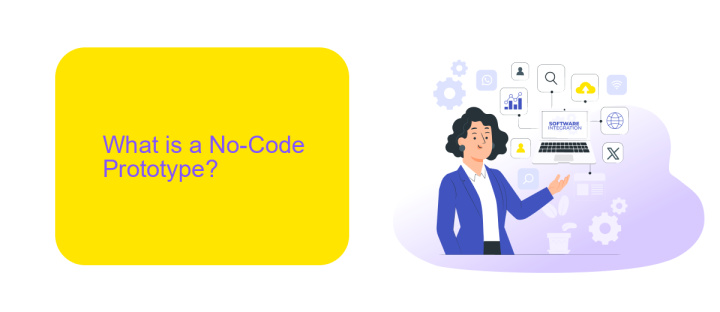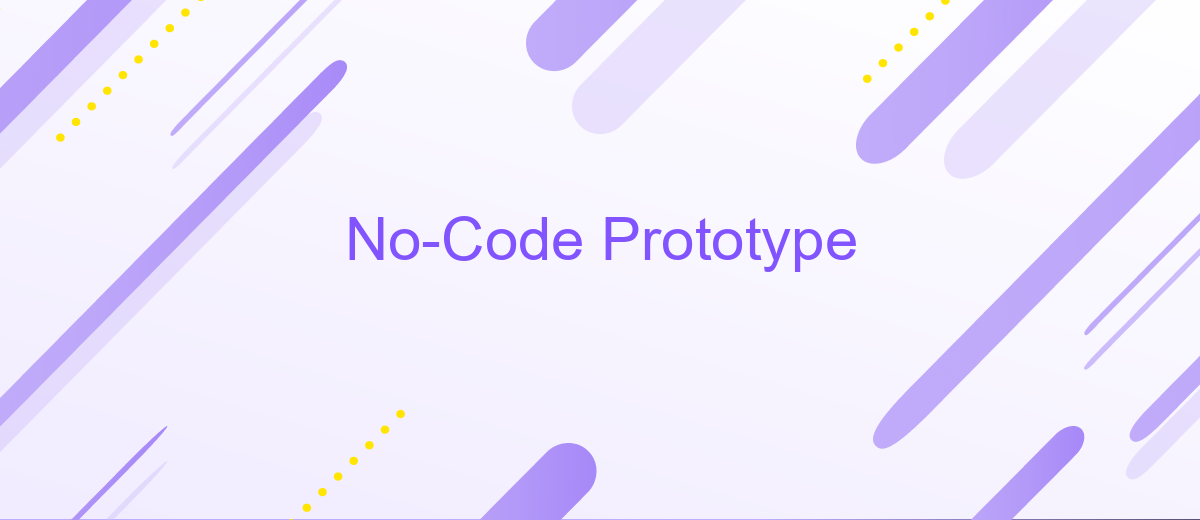No-Code Prototype
In today's fast-paced digital world, the ability to quickly and efficiently create prototypes is crucial for innovation. No-code platforms have revolutionized the way we approach this process, enabling individuals with little to no programming skills to bring their ideas to life. This article explores the benefits, tools, and best practices for leveraging no-code solutions to develop impactful prototypes.
Introduction
No-Code prototyping has revolutionized the way entrepreneurs, designers, and developers bring their ideas to life. By eliminating the need for extensive coding knowledge, these tools empower individuals to quickly create functional prototypes, test concepts, and iterate designs with ease. This democratization of technology has opened the doors to innovation for a broader audience.
- Rapid development and iteration
- Cost-effective solution for startups
- Empowers non-technical users
- Facilitates early-stage user testing
One of the key advantages of No-Code prototyping is the ability to seamlessly integrate various services and tools. Platforms like ApiX-Drive enable users to connect different applications without writing a single line of code, further simplifying the development process. This integration capability ensures that prototypes can interact with real-world data and services, providing a more accurate representation of the final product. As a result, No-Code prototyping not only accelerates development but also enhances the overall quality and functionality of the prototypes.
What is a No-Code Prototype?

A no-code prototype is a preliminary version of a product that is created without the need for traditional coding. This approach allows individuals with little to no programming skills to bring their ideas to life using visual development tools. These tools often come with drag-and-drop interfaces, pre-built templates, and other user-friendly features that simplify the design and functionality process. The primary goal of a no-code prototype is to quickly and efficiently validate concepts, gather feedback, and make necessary iterations before moving on to full-scale development.
One of the key advantages of no-code prototyping is the ability to integrate various services and automate workflows effortlessly. For instance, platforms like ApiX-Drive enable users to set up integrations between different applications without writing a single line of code. This can be particularly useful for creating functional prototypes that mimic real-world interactions and data flows. By leveraging such tools, teams can focus on refining their ideas and improving user experience, rather than getting bogged down by technical complexities.
Benefits of Using No-Code Prototyping

No-code prototyping offers numerous advantages for businesses and individuals looking to quickly bring their ideas to life. By eliminating the need for extensive coding knowledge, it democratizes the development process and allows a broader range of people to participate in creating functional prototypes.
- Speed and Efficiency: No-code tools significantly reduce the time required to develop a prototype, enabling rapid iteration and faster feedback cycles.
- Cost-Effective: By lowering the barrier to entry, no-code platforms reduce the need for expensive development resources, making it more affordable for startups and small businesses.
- User-Friendly: These tools are designed to be intuitive, allowing non-technical users to easily create and modify prototypes.
- Integration Capabilities: Services like ApiX-Drive facilitate seamless integration with other applications, enhancing the functionality of your prototype without complex coding.
- Collaboration: No-code platforms often include features that support team collaboration, making it easier for multiple stakeholders to contribute and review the prototype.
Overall, no-code prototyping empowers users to quickly and affordably test their ideas, making it an invaluable tool in the early stages of product development. By leveraging platforms like ApiX-Drive for integrations, you can further enhance your prototype's capabilities, ensuring a more comprehensive and functional end product.
How to Create a No-Code Prototype

Creating a no-code prototype allows you to validate ideas quickly without extensive technical skills. Start by identifying the core features and functionalities of your prototype. Clearly outline your goals and objectives to ensure you stay focused throughout the process.
Next, choose a no-code platform that suits your project needs. There are numerous options available, such as Bubble, Adalo, and Webflow, which offer user-friendly interfaces and robust capabilities. Select a platform that aligns with your requirements and start building the basic structure of your prototype.
- Define your user flow and create wireframes.
- Use drag-and-drop tools to design the interface.
- Incorporate interactive elements like buttons and forms.
- Test the prototype to ensure it meets your objectives.
For integrating third-party services and automating workflows, consider using ApiX-Drive. This tool simplifies the integration process, allowing you to connect various applications without coding. By leveraging no-code platforms and integration tools, you can efficiently create a functional prototype that brings your ideas to life.
- Automate the work of an online store or landing
- Empower through integration
- Don't spend money on programmers and integrators
- Save time by automating routine tasks
Conclusion
No-code prototyping has revolutionized the way we approach product development, enabling faster iterations and more inclusive participation from non-technical team members. By eliminating the need for extensive coding knowledge, these tools empower a broader range of individuals to contribute to the creative process, fostering innovation and collaboration. This democratization of technology not only speeds up the prototyping phase but also reduces costs and allows for more efficient use of resources.
Moreover, the integration capabilities of no-code platforms further enhance their utility. Services like ApiX-Drive simplify the process of connecting various applications, enabling seamless data flow and automation without the need for complex coding. This ease of integration ensures that prototypes can be more functional and closer to the final product, providing valuable insights early in the development cycle. In conclusion, no-code prototyping tools, combined with powerful integration services, offer a robust solution for modern product development, making it accessible, efficient, and highly collaborative.
FAQ
What is a No-Code Prototype?
How can I create a No-Code Prototype?
What are the benefits of using No-Code tools for prototyping?
Can I integrate my No-Code Prototype with other services?
Is a No-Code Prototype scalable for production use?
Do you want to achieve your goals in business, career and life faster and better? Do it with ApiX-Drive – a tool that will remove a significant part of the routine from workflows and free up additional time to achieve your goals. Test the capabilities of Apix-Drive for free – see for yourself the effectiveness of the tool.


